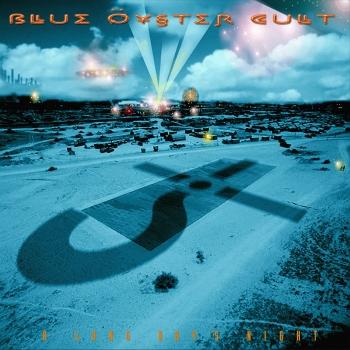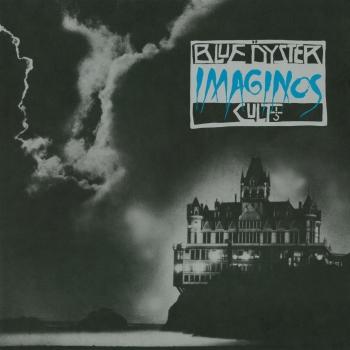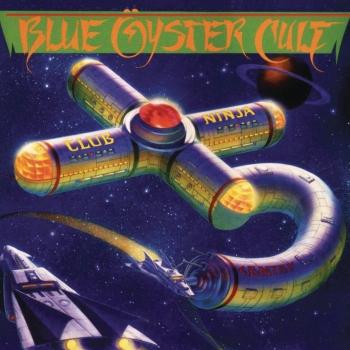
Some Enchanted Evening (Remaster) Blue Oyster Cult
Album info
Album-Release:
1978
HRA-Release:
13.07.2016
Label: Sony / Columbia / Legacy
Genre: Rock
Subgenre: Hard Rock
Artist: Blue Oyster Cult
Composer: S. Pearlman, A. Bouchard, D. Roeser, J. Bouchard, MC 5, B. Mann, Cynthia Weil
Album including Album cover
I`m sorry!
Dear HIGHRESAUDIO Visitor,
due to territorial constraints and also different releases dates in each country you currently can`t purchase this album. We are updating our release dates twice a week. So, please feel free to check from time-to-time, if the album is available for your country.
We suggest, that you bookmark the album and use our Short List function.
Thank you for your understanding and patience.
Yours sincerely, HIGHRESAUDIO
- 1R.U. Ready 2 Rock06:08
- 2E.T.I. (Extra Terrestrial Intelligence)05:19
- 3Astronomy08:18
- 4Kick out the Jams03:07
- 5Godzilla04:13
- 6(Don't Fear) The Reaper05:53
- 7We Gotta Get out of This Place04:50
Info for Some Enchanted Evening (Remaster)
The second Blue Öyster Cult live album appeared only three years after the first one, and was just a single one this time. Perhaps not all that essential, but it gives you at least a chance to hear the masterpiece "Astronomy" performed live, and in a very good version too. "(Don't Fear) The Reaper" stands on the other hand no chance to match the superior studio version, and sounds a bit thin and flat here. The album also features two covers: MC 5's "Kick Out the Jams" and The Animal's "We Gotta Get Out of This Place" which both are rather overrated "classics" in my opinion. Good versions of "R.U. Ready 2 Rock" and "E.T.I. (Extraterrestrial Intelligence)" pulls the overall impression of the album up a bit. "Godzilla" is not bad either, but I still prefer the studio version. The biggest problem with the album is probably that it's impossible to not compare it to "On Your Feet or on Your Knees" and then it simply can't stand up. It sounds almost restricted and a bit tame compared to their classic first live album. If you want live versions of songs from "Agents of Fortune" and "Spectres", get "Extraterrestrial Live" from 1982 instead. That one is not perfect either, but it gives you more music for your money and many of the same songs performed better.
Eric Bloom, stun guitar, keyboards, vocals, lead vocals (on tracks 1-4, 7-9, 11, 13, 14)
Donald "Buck Dharma" Roeser, guitar, vocals, lead vocals (on tracks 5, 6)
Allen Lanier, keyboards, guitars
Joe Bouchard, bass, lead vocals (on tracks 10)
Albert Bouchard, drums, guitar, backing vocals
Recorded live December 31, 1977 and June 1, 1978 live at Barton Coliseum, Little Rock, Arkansas
Engineered by Corky Stasiak, Jay Krugman
Produced by Sandy Pearlman, Murray Krugman, Blue Öyster Cult
Digitally remastered
Blue Öyster Cult
Spanning three decades, Blue Öyster Cult has a long and storied history. The band got its start in the late ’60s on Long Island, New York, as the Soft White Underbelly, but each member had been involved in bands previously in high school and college, before ending up in the “right place at the right time” to create the beginnings of Blue Öyster Cult.
The threads that eventually wove together to create Blue Öyster Cult got their start in upstate New York.
Long Island native Donald Roeser and Albert Bouchard (of Watertown, New York) met at Clarkson College, in Potsdam, NY. The two were introduced by a mutual friend, Bruce Abbott (who later co-authored “Golden Age of Leather” with Donald). With Abbott and two other friends, they formed “The Disciples” and played college parties and local beer halls. The next year, the band reformed and played the same circuits as “Travesty” (named after the Blues Project album). Through all this, their studies fell by the wayside, and both Albert and Donald decided to quit college to concentrate on playing music full-time.
Eventually “Travesty” broke up, Donald and Albert took seperate paths for a while. Donald went back to Long Island, and Albert took a musical opportunity in Chicago. After moving there, though, the band fizzled, and Albert returned to NY and joined Donald. In the meantime, Donald had been jamming with local musicians, and had met a person that would become very influential in their future: Sandy Pearlman.
Sandy Pearlman became interested in rock music around the time of the British Invasion, and was a pioneering voice of rock criticism, opening a new field for creative writers like Lester Bangs. Both Pearlman and his friend Richard Meltzer were contributors for seminal magazine “Crawdaddy!,” the first magazine that dedicated itself to analysis of rock music and its culture.
Allen Lanier came into the fold by way of guitarist John Wiesenthal. Allen had accepted employment at a film company at which Wiesenthal was also an employee. After becoming acquainted, Wiesenthal invited Allen out to Long Island to meet and jam with the loose group of musicians he played with, and Allen began to regularly jam with them.
An old house near Stony Brook College became ground zero for the formative band, and casual jams with whomever happened to be hanging around began to turn into rehearsals with a core band, which included Wiesenthal, Donald, Albert, Allen and Andrew Winters, a school friend of Donald. It was 1967.
Pearlman (along with Meltzer and Wiesenthal) had been a student at Stony Brook, and was becoming increasingly involved in the music scene. When he heard the formative combo, he instantly recognized the talent at work. He had an idea for a band, and thought that this group of musicians had the chops to put that idea into play. The musicians saw that Pearlman’s contacts and stature in the local (and increasingly national) scene could help them spawn a career as well, and an alliance was formed.
This album contains no booklet.



















